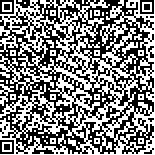| 摘要: |
| [摘要] 目的 探讨竖脊肌深面与横突间隙阻滞入路和菱形肌与竖脊肌间隙阻滞入路的竖脊肌平面阻滞(ESPB)在胸腔镜肺叶切除术后的镇痛效果,为临床选择更优的ESPB路径提供依据。方法 选择2021年12月1日至2022年5月30日于烟台毓璜顶医院择期行封堵器支气管插管全身麻醉下电视辅助胸腔镜肺叶切除术患者90例。采用随机数字表法将其分为E组、R组和C组,每组30例。E组采用竖脊肌深面与横突间隙阻滞入路;R组采用菱形肌与竖脊肌间隙阻滞入路;C组为对照组,不进行竖脊肌阻滞的任何操作。比较三组术后6 h(T1)、12 h(T2)、24 h(T3)和48 h(T4)静息状态以及活动或咳嗽状态下的视觉模拟量表(VAS)评分。比较三组术后补救镇痛情况和不良反应的发生情况。结果 在T1~T4时间点,三组静息、活动或咳嗽状态下VAS评分均呈先上升后下降的趋势。在T1、T2、T3时点,E组静息、活动或咳嗽状态下VAS评分均显著低于R组和C组(P<0.05)。在T1时间点,R组静息、活动或咳嗽状态下VAS评分均低于C组;在T2时间点,R组仅活动或咳嗽状态下VAS评分低于C组,差异有统计学意义(P<0.05)。三组T4时间点的VAS评分差异无统计学意义(P>0.05)。与R组和C组比较,E组术后补救镇痛次数更少,镇痛满意度评分更高,差异有统计学意义(P<0.05)。E组发生恶心、呕吐11例(36.67%),R组12例(40.00%),C组17例(56.57%),差异无统计学意义(χ2=2.790,P=0.248)。结论 两种路径的ESPB均能在一定程度上减轻胸腔镜肺叶切除术后患者的疼痛,减少术后镇痛药物的使用,且并发症少,其中竖脊肌深面与横突间隙阻滞入路的术后24 h镇痛效果更佳。 |
| 关键词: 竖脊肌平面阻滞 术后镇痛 路径 肺叶切除术 胸腔镜 |
| DOI:10.3969/j.issn.1674-3806.2023.01.11 |
| 分类号:R 614.4 |
| 基金项目: |
|
| A study on the analgesic effects of two approaches of erector spinae plane block after thoracoscopic lobectomy |
|
WANG Jie, LI Ke-zhong
|
|
Department of Anesthesiology, Yantai Yuhuangding Hospital, the Second Clinical Medical College of Binzhou Medical University, Shandong 264000, China
|
| Abstract: |
| [Abstract] Objective To investigate the analgesic effects of erector spinae plane block(ESPB) after thoracoscopic lobectomy by the deep surface of erector spinae muscles block approach and the rhomboid muscle and erector spine muscle space block approach, so as to provide a basis for clinical selection of better ESPB pathway. Methods From December 1, 2021 to May 30, 2022, 90 patients who underwent elective surgery of video-assisted thoracoscopic lobectomy under plugging device bronchial intubation and general anesthesia in Yantai Yuhuangding Hospital were selected. The patients were divided into group E, group R and group C by random number table method, with 30 cases in each group. The deep surface of erector spinae muscles block approach was used in the group E, and the rhomboid muscle and erector spine muscle space block approach was used in the group R, and the group C was used as control group without any operation of ESPB. The Visual Analogue Scale(VAS) scores were compared among the three groups at resting state and active or coughing state 6 hours(T1), 12 hours(T2), 24 hours(T3) and 48 hours(T4) after operation. The postoperative rescue analgesia and the occurrence of adverse reactions were compared among the three groups. Results At the time points from T1 to T4, the VAS scores showed a trend of increase first and then decrease in the three groups at resting state and active or coughing state. At the time points of T1, T2 and T3, the VAS scores in the group E at resting state and active or coughing state were significantly lower than those in the group R and the group C(P<0.05). At the time point of T1, the VAS scores of the group R were lower than those of the group C at resting state and active or coughing state, and at the time point of T2, the VAS scores of the group R were significantly lower than those of the group C only at active or coughing state, and the differences were significant(P<0.05). There were no significant differences in VAS scores at the time point of T4 among the three groups(P>0.05). Compared with that in the group R and the group C, the frequency of postoperative rescue analgesia in the group E was less and the scores of analgesia satisfaction in the group E were higher than those in the group R and the group C, and the differences were statistically significant(P<0.05). There were 11 cases of nausea and vomiting in the group E(36.67%), 12 cases of nausea and vomiting in the group R(40.00%) and 17 cases of nausea and vomiting in the group C(56.57%), and the difference was not statistically significant among the three groups(χ2=2.790, P=0.248). Conclusion ESPB of the two approaches can relieve the pain of patients after thoracoscopic lobectomy to some extent, and can reduce the use of postoperative analgesics with less complications, of which the analgesic effect of the deep surface of erector spinae muscles block approach is better than that of the rhomboid muscle and erector spine muscle space block approach 24 hours after operation. |
| Key words: Erector spinae plane block Postoperative analgesia Approach Pulmonary lobectomy Thoracoscope |

